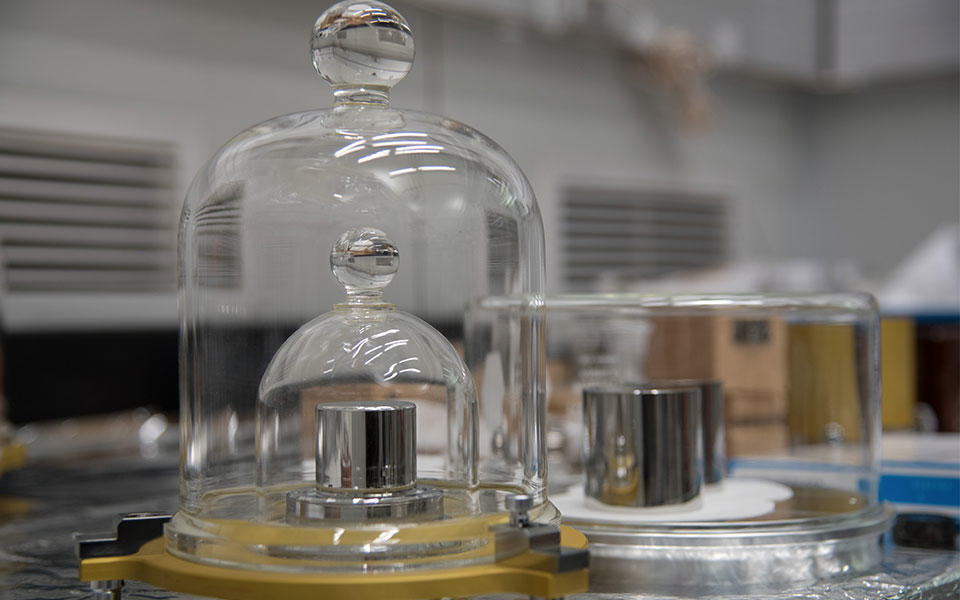Kilogram: The Past

For almost a century and a half, much of the world used a highly polished, golf ball-sized cylinder of a platinum alloy as the international standard for mass measurement — a kilogram. But where did this unit of measurement come from?
From Cradle to Grave
Near the end of the 1700s, King Louis XVI of France ordered a new system of measurement in an effort to crack down on rampant cheating taking place under the existing systems. The king's commission recommended what would become the decimal metric system, and for mass measurements proposed a new unit called a grave, which was defined as the mass of a liter of water at the ice point.

Then came the French Revolution. The new French republic adopted the idea of the metric system with a few changes. Instead of a grave, the republic picked a new standard — the gramme, or “gram” in English, whose definition was the absolute mass of 1 cubic centimeter of water at 4 degrees Celsius.
However, a 1-gram artifact made of water — not much bigger than a pea — was impractical for commercial use. So they chose something more grave-like instead, a solid metal artifact a thousand times more massive than a gram: a kilogram.
On June 22, 1799, the republic adopted the new mass artifact, forged from platinum and dubbed the "kilogram of the archives," after the building in which it was stored. This new kilogram reigned as the mass standard in France for almost a hundred years.
The Meter Convention of 1875
As the global economy grew in the 1800s, so did the problems with measuring mass. Each country maintained its own standards, which were often incompatible with those of other countries.
On May 20, 1875, 17 different countries — including the United States — signed the Treaty of the Meter (also called the Meter Convention) to establish new international prototypes for mass and length. The agreement defined the official unit of mass as the kilogram and embodied it in a new metal artifact whose mass was essentially the same as the "kilogram of the archives." This new standard was made from an alloy of platinum (90 percent) and iridium (10 percent) and called the International Prototype Kilogram (IPK).
Copies of the IPK were sent to the countries which had signed the agreement. In 1890, the United States received the fourth and 20th copies — K4 and K20. They served as official national kilogram standards and check standards, in tandem with additional kilogram standards that the U.S. later acquired. They are kept at NIST's Gaithersburg campus in Maryland.


